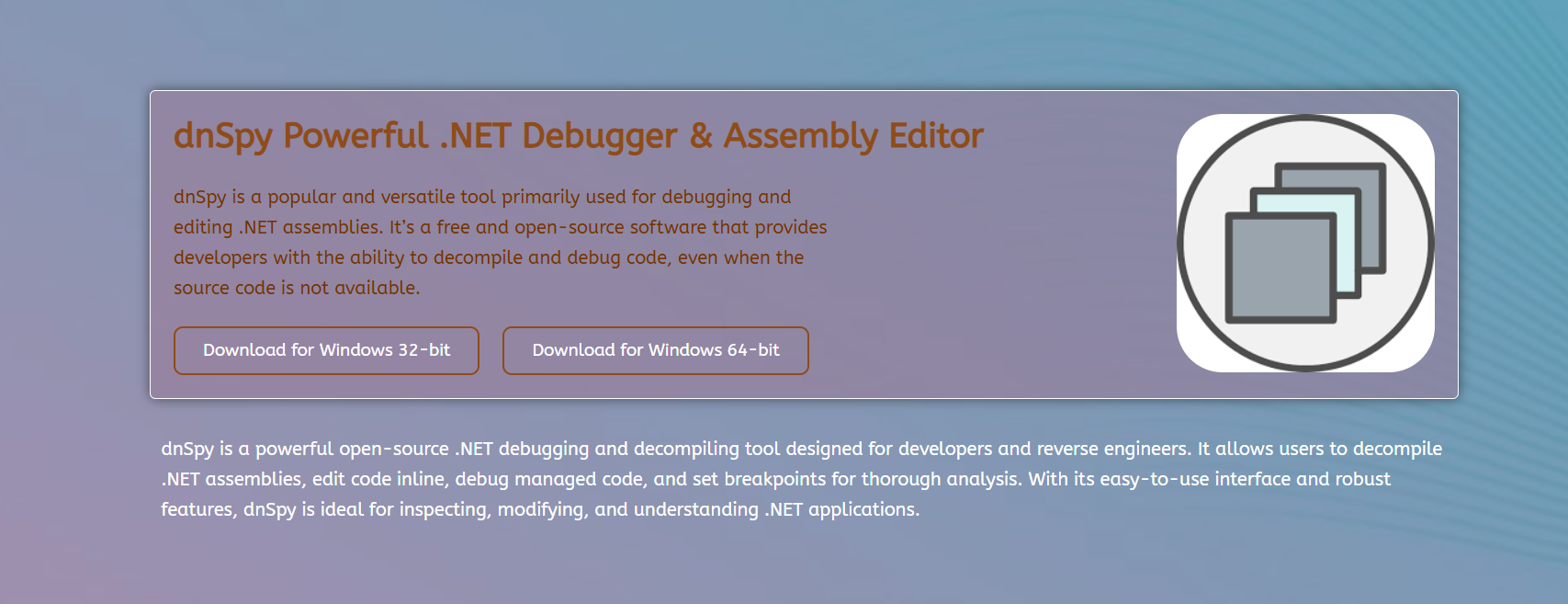When choosing software tools for .NET development or reverse engineering, understanding licensing terms is crucial. dnSpy, a widely recognized tool for .NET assembly decompilation, debugging, and editing, often raises questions regarding its cost and source code availability. Users want clarity on whether dnSpy is free to use and open source, as these factors influence accessibility, trust, and potential customization.
Licensing impacts how software can be used across personal, educational, or commercial projects. Free software lowers entry barriers for both learners and professionals, while open source fosters transparency and collaborative improvement. This article explores dnSpy’s licensing framework, emphasizing its implications for users and developers.
A clear understanding of dnSpy’s licensing helps users confidently adopt it for a wide range of scenarios, from simple decompilation to advanced debugging and assembly editing. The article also discusses how the open-source nature benefits the broader .NET community.
Licensing Model of dnSpy
Free Software with No Cost Barriers
dnSpy is distributed free of charge. Anyone can download and use it without paying license fees or subscriptions. This unconditional free access makes dnSpy appealing to a broad spectrum of users, from hobbyists and students to professional developers and security researchers. The zero-cost model encourages widespread experimentation and adoption without financial limitations.
Open Source License and Code Availability
dnSpy’s source code is publicly available, allowing users to inspect, modify, and redistribute the software. Open sourcing under a permissive license grants the freedom to study the inner workings of dnSpy, fostering transparency. Users gain assurance that no hidden malicious code exists, which is essential when working on sensitive or security-related projects.
The MIT License Explained
dnSpy is released under the MIT License, one of the most permissive and widely used open-source licenses. This license permits users to use, copy, modify, merge, publish, distribute, sublicense, and sell copies of the software freely. Conditions mainly require retaining the original copyright notice and license in redistributed versions. Key points of the MIT License include:
- Permission to freely use and modify the software for any purpose
- Rights to distribute and sublicense without heavy restrictions
- Requirement to include the original license and copyright notice in redistributions
Advantages of dnSpy’s Free and Open Source Nature
Community-Driven Development and Contributions
Because dnSpy is open source, a diverse community of developers can contribute enhancements, bug fixes, and new features. This collaboration accelerates innovation and helps maintain the tool’s compatibility with evolving .NET technologies. Community involvement ensures that dnSpy adapts rapidly to user needs and stays current with framework updates.
Improved Security Through Transparency
Open access to source code allows security professionals and users to audit dnSpy for vulnerabilities or malicious components. This transparency reduces risks often associated with closed-source tools, where hidden backdoors or bugs might exist. Users can verify the tool’s integrity themselves or rely on community audits. Key security benefits include:
- Early detection of vulnerabilities through public review
- Assurance of no hidden malicious code or backdoors
Customization and Flexibility
Open source software encourages modifications. DNSpy users with specific requirements can adapt or extend the tool by writing custom patches or plugins. This flexibility is invaluable for specialized workflows such as malware analysis, game modding, or automated code analysis. Proprietary software often restricts such customizations.
No Vendor Lock-in
Being free and open source means users avoid dependency on a single vendor or licensing scheme. If original maintainers stop development, the community can fork and continue evolving dnSpy independently. This decentralization ensures longevity and reduces the risks of sudden discontinuation.
Key benefits of dnSpy’s licensing model:
- Zero cost for unlimited use
- Transparent source code for security
- Active community-driven improvements
- Freedom to customize and extend
- Absence of restrictive licensing terms
- Independence from vendor control
How to Access and Use dnSpy
Official Download Sources
dnSpy is widely available through official project repositories such as GitHub. Users should always download from trusted sources to avoid tampered or malicious versions. The official releases include both portable and installer versions, making setup on Windows systems easy.
Installation and Setup
Setting up dnSpy requires no licensing registration or activation keys. The tool runs smoothly on Windows platforms, supporting .NET Framework, .NET Core, and Unity assemblies. Its lightweight nature allows quick installation without complex dependencies.
Updates and Versioning
The dnSpy community frequently releases updated builds to fix bugs and add support for new .NET features. Users can follow official repositories or community channels to stay informed on the latest versions. Update processes are straightforward and do not incur additional costs.
Cross-Platform Considerations
Windows-Centric Design
dnSpy is primarily designed for Windows environments, aligning with the .NET Framework’s historic focus on Windows. Most official builds run on Windows only, which fits the majority of .NET developers who use this OS. This platform specificity does not affect its free or open source status.
Potential for Cross-Platform Ports
Since dnSpy’s source code is open, community members can port or adapt it for Linux, macOS, or other platforms. While official cross-platform versions are limited, the openness allows experimentation. Users needing multi-platform tools may consider alternative projects inspired by dnSpy’s codebase.
Support, Documentation, and Community
Comprehensive Documentation
dnSpy provides comprehensive documentation that covers installation, usage, debugging, and assembly editing. While not exhaustive, available guides help users understand core functionalities. The open-source community supplements this with tutorials, videos, and blogs, easing the learning curve.
Active Community Forums and Issue Trackers
Users seeking help can access active forums, GitHub issue trackers, and discussion groups. These channels facilitate rapid problem resolution, feature requests, and collaborative troubleshooting. Both newcomers and experts benefit from shared expertise.
Contribution Opportunities
Open source status invites developers to contribute patches or features back to the project. Contributors help improve stability, add functionality, or adapt dnSpy to emerging needs. This culture ensures continued innovation and responsiveness.
Community and support advantages:
- Detailed documentation and tutorials
- Responsive issue tracking on GitHub
- Collaborative user and developer forums
- Opportunities to contribute and customize
Use Cases Enabled by Free and Open Source Licensing
Educational Purposes
Students and instructors use dnSpy freely to explore .NET internals, learn debugging techniques, and understand assembly structures. No licensing fees or restrictions impede classroom or self-study activities.
Professional Software Development
Development teams incorporate dnSpy into workflows for debugging, testing, and patching .NET applications. The permissive license allows seamless integration with proprietary toolchains and internal processes.
Security Research and Malware Analysis
Security analysts rely on dnSpy’s transparency to safely inspect potentially malicious assemblies. Open-source access permits modification and extension to suit forensic requirements, helping to identify threats and vulnerabilities.
Game Modding and Reverse Engineering
Game modders use dnSpy to examine Unity or other NET-based games, creating custom patches and mods. The ability to edit assemblies directly supports creativity and functionality enhancement.
Conclusion
dnSpy is unquestionably free and open source, licensed under the permissive MIT License. This status provides users with cost-free access and significant freedoms to inspect, modify, and distribute the software. Transparency fosters trust and security, while an active community encourages rapid development and support. The flexibility enabled by open source ensures that dnSpy remains adaptable for a wide array of users, from learners and hobbyists to professionals and security experts. Its licensing model, combined with rich features, makes dnSpy a reliable, transparent, and powerful tool for .NET assembly decompilation and debugging.







